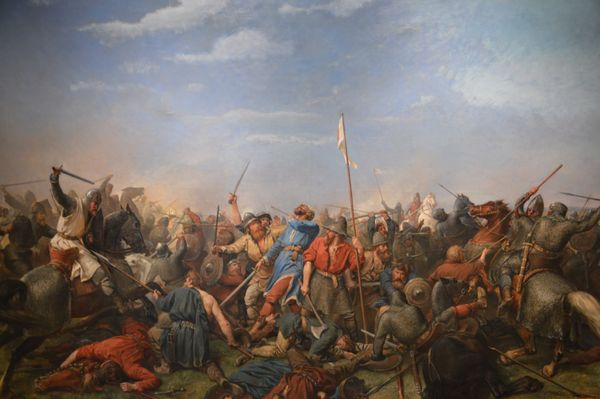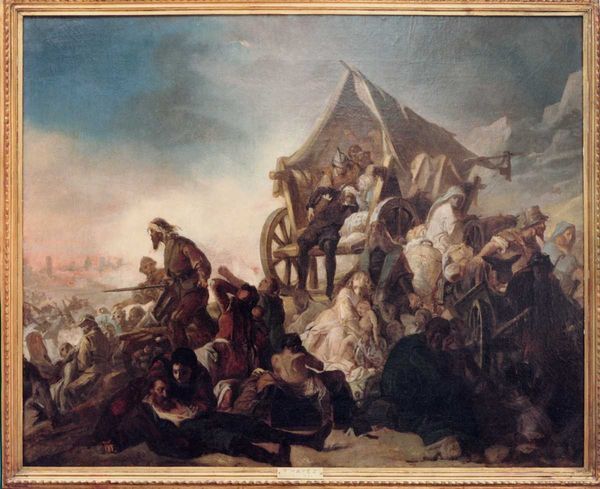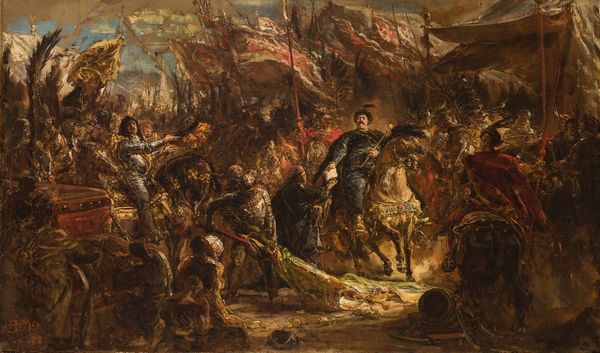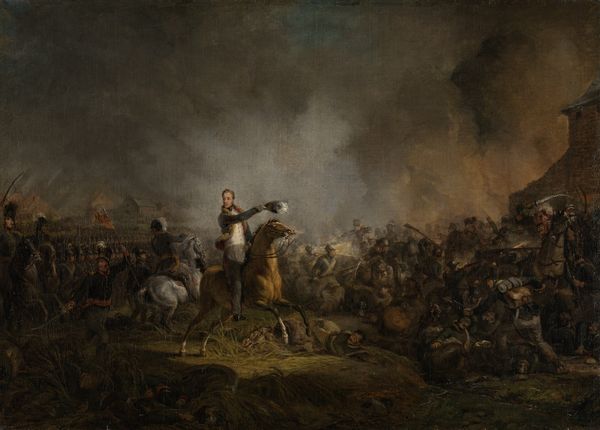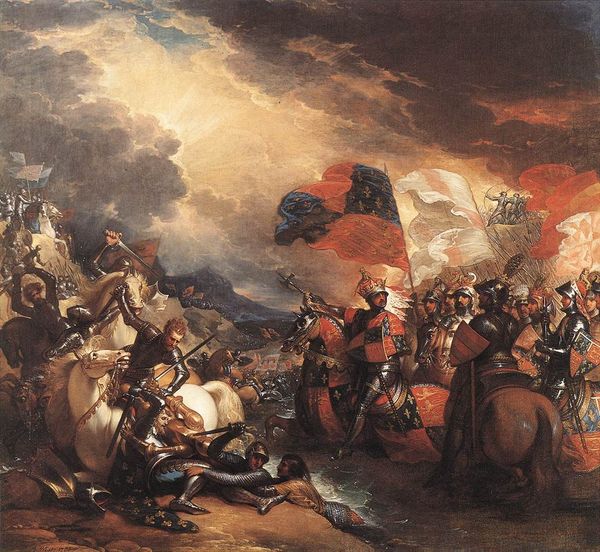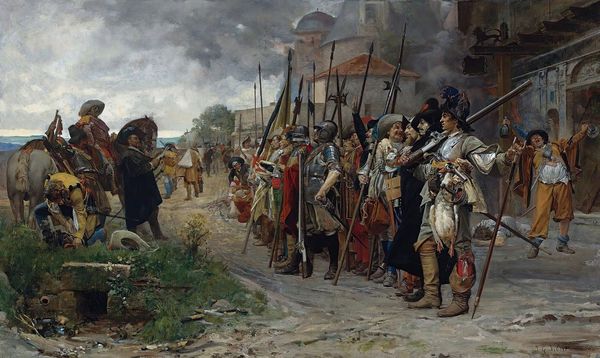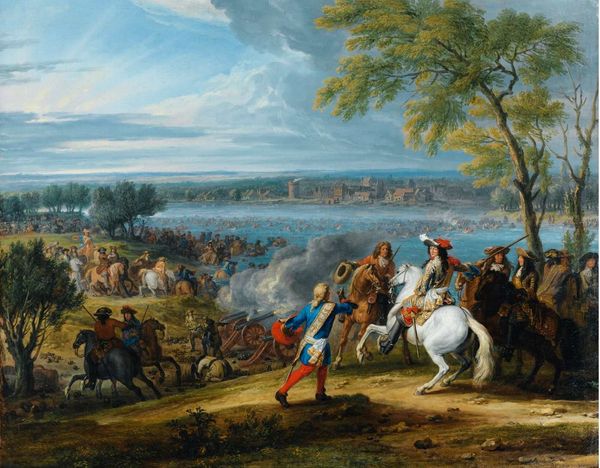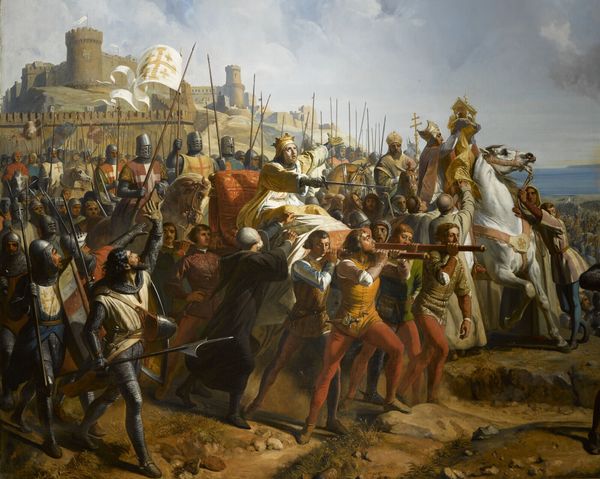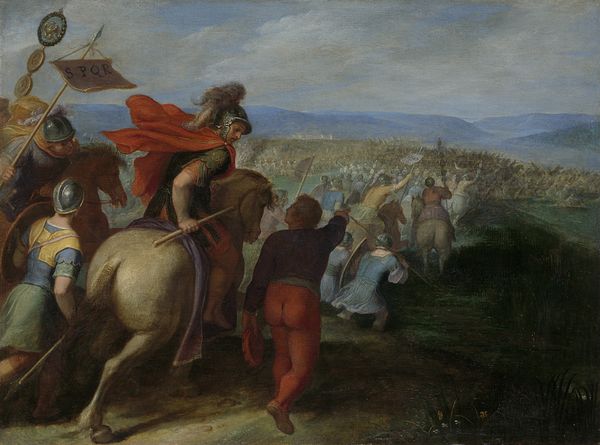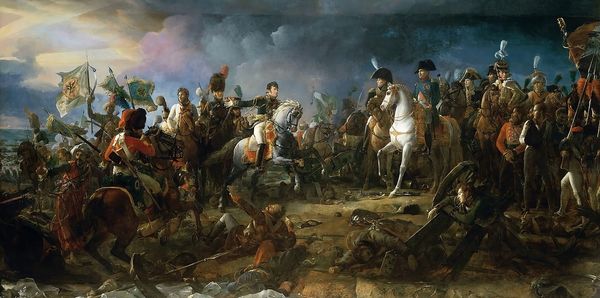
Dannebrog Falling from the Sky During the Battle of Lyndanisse, June 15, 1219 1809
0:00
0:00
christianaugustlorentzen
National Gallery of Denmark (Statens Museum for Kunst), Copenhagen, Denmark
painting, oil-paint
#
narrative-art
#
painting
#
oil-paint
#
landscape
#
figuration
#
romanticism
#
history-painting
#
academic-art
#
watercolor
Copyright: Public domain
Editor: So, this is Christian August Lorentzen's "Dannebrog Falling from the Sky During the Battle of Lyndanisse, June 15, 1219," painted in 1809. It's an oil painting depicting a dramatic moment in Danish history. It feels… staged, almost theatrical. The flag descending is definitely eye-catching! What strikes you most when you look at it? Curator: The Dannebrog itself is paramount, isn't it? This isn't just cloth; it's a national symbol becoming legend, imbued with divine intervention. Its fall suggests both conflict and grace. How might this event, imagined centuries later, serve as cultural memory? Editor: A founding myth? Maybe. It's interesting how the soldiers react; some are fighting, others are in awe. The contrast makes the scene so vibrant! Curator: Exactly! And look at the composition. The flag splits the sky, light versus dark, signaling both hope and struggle. Does the painter use light to further emotional weight in certain groups or characters? What feeling might a contemporary Danish viewer have experienced? Editor: I see what you mean. The illuminated figures clearly are intended to represent the 'chosen few,' those receiving the divine gift, while darkness overshadows their foes, both literally and metaphorically. Curator: Indeed. The Dannebrog transforms from a battle standard into an iconographic symbol, its narrative power exceeding its physical presence. We can think of similar events and icons used around the world, signaling this specific painting participates in a long and still relevant human impulse. Editor: It is almost like a sign from the Gods. Seeing the historical, psychological, and national importance makes me see it beyond its artistic components! Curator: Precisely! And through such understanding, we acknowledge the artwork as more than art; it’s history, identity, and perhaps, destiny rendered in pigment.
Comments
No comments
Be the first to comment and join the conversation on the ultimate creative platform.
